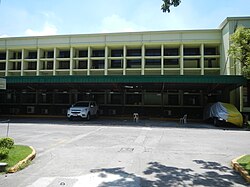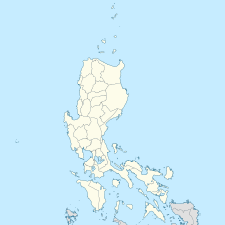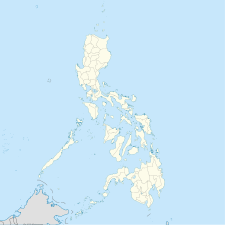
The Philippine General Hospital, simply referred to as UP–PGH or PGH, is a tertiary state-owned hospital administered and operated by the University of the Philippines Manila. It is designated as the National University Hospital, and the national government referral center. It stands within a 10-hectare (25-acre) site located at the UP Manila Campus in Ermita, Manila. PGH has 1,100 beds and 400 private beds, and has an estimated of 4,000 employees to serve more than 600,000 patients every year.

Culion, officially the Municipality of Culion, is a 3rd class municipality in the province of Palawan, Philippines. According to the 2020 census, it has a population of 23,213 people.

The Department of Health is the executive department of the government of the Philippines responsible for ensuring access to basic public health services by all Filipinos through the provision of quality health care, the regulation of all health services and products. It is the government's over-all technical authority on health. It has its headquarters at the San Lazaro Compound, along Rizal Avenue in Manila.

Santa Cruz is a district in the northern part of the City of Manila, Philippines, located on the right bank of the Pasig River near its mouth, bordered by the districts of Tondo, Binondo, Quiapo, and Sampaloc, as well as the areas of Grace Park and Barrio San Jose in Caloocan and the district of La Loma in Quezon City. The district belongs to the 3rd congressional district of Manila.

The Dr. Jose N. Rodriguez Memorial Hospital (DJNRMH), formerly known as Central Luzon Sanitarium, was established in 1940, to accommodate patients with Hansen's Disease in the entire Luzon region in the Philippines. It is currently situated within the district of Tala, in Caloocan, Metro Manila, and occupies 130 hectares of land area, from the original 808 hectares. The reduction of land area was to accommodate previous homeless treated patients who eventually settled and established their own community, called Tala.

The Research Institute for Tropical Medicine is a health research facility based in Muntinlupa, Philippines.
Health care in the Philippines varies with private, public and barangay health centers. Most of the national burden of health care is provided by private health providers, with the cost shouldered by the state or by patients.
Leper colony money was special money which circulated only in leper colonies due to the fear that money could carry leprosy and infect other people. However, leprosy is not easily transmitted by casual contact or objects; actual transmission only happens through long-term, constant, intimate contact with leprosy sufferers and not through contact with everyday objects used by sufferers.
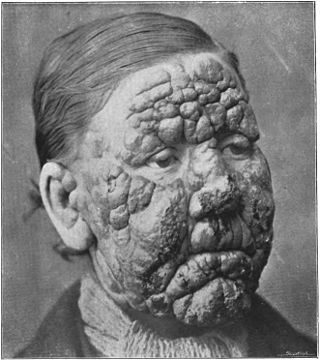
Although leprosy, or Hansen's Disease, was never an epidemic in The United States, cases of leprosy have been reported in Louisiana as early as the 18th century. The first leprosarium in the continental United States existed in Carville, Louisiana from 1894-1999 and Baton Rouge, Louisiana is the home of the only institution in the United States that is exclusively devoted to leprosy consulting, research, and training.
The Culion leper colony is a former leprosarium located on Culion, an island in the Palawan province of the Philippines. It was established by the U.S. government in order to rid leprosy from the Philippine Islands through the only method known at the time: isolating all existing cases and gradually phasing out the disease from the population. In addition to segregating the disease from the rest of the population, the island was later established in order to offer a better opportunity for people afflicted with leprosy to receive adequate care and modern treatments.

The history of medicine in the Philippines discusses the folk medicinal practices and the medical applications used in Philippine society from the prehistoric times before the Spaniards were able to set a firm foothold on the islands of the Philippines for over 300 years, to the transition from Spanish rule to fifty-year American colonial embrace of the Philippines, and up to the establishment of the Philippine Republic of the present. Although according to Dr. José Policarpio Bantug in his book A Short History of Medicine in the Philippines During The Spanish Regime, 1565-1898 there were "no authentic monuments have come down to us that indicate with some certainty early medical practices" regarding the "beginnings of medicine in the Philippines" a historian from the United States named Edward Gaylord Borne described that the Philippines became "ahead of all the other European colonies" in providing healthcare to ill and invalid people during the start of the 17th century, a time period when the Philippines was a colony of Spain. From the 17th and 18th centuries, there had been a "state-of-the-art medical and pharmaceutical science" developed by Spanish friars based on Filipino curanderos that was "unique to the [Philippine] islands."

The National Center for Mental Health, is a 4,200-bed psychiatric hospital occupying 47 hectares of land in the city of Mandaluyong, Metro Manila, Philippines. It is PhilHealth-accredited.

San Lazaro Tourism and Business Park is the marketing name given to the 16-hectare (40-acre) multiple use site under development by the Manila Jockey Club Investments Corp. in Manila, Philippines. It takes its name from the old San Lazaro Hippodrome, a horse racetrack that stood on the site from 1912 to 2003. Currently, the site includes the SM City San Lazaro shopping center, the two-tower Vertex office complex, the three-tower Celadon Park and Celadon Residences, and the five-tower Avida Towers San Lazaro condominium complex. It has been declared a tourism economic zone with information technology component in 2009.
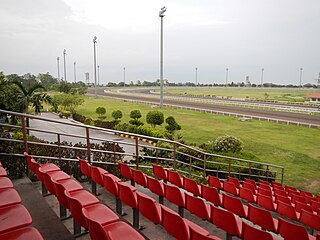
The San Lazaro Leisure Park, officially known as the San Lazaro Leisure and Business Park, is a mixed-used venue which features a racetrack in Carmona, Cavite, Philippines. It is the home of the Manila Jockey Club.

José F. Fabella was a Filipino physician and a public health advocate regarded in a biography as the "father of public health and social welfare in the Philippines."

Hospital de San Lázaro was a hospital in the city of Havana, Cuba. It dates back to the 17th century, when it served as headquarters for some huts built near the Caleta de Juan Guillén, then known as Caleta de San Lázaro, in an area about a mile outside the city walls.
The Medical City Ortigas is a tertiary care hospital in Pasig, Metro Manila, Philippines. Opened in 2004, it is the main hospital of The Medical City (TMC) which maintains a network of hospitals and clinics which are mostly based in the Philippines.
The COVID-19 pandemic in Eastern Visayas is part of the worldwide pandemic of coronavirus disease 2019 caused by severe acute respiratory syndrome coronavirus 2. The virus reached Eastern Visayas on March 23, 2020, when the first case of the disease was confirmed in Northern Samar.
The COVID-19 pandemic in the Cordillera Administrative Region is part of the worldwide pandemic of coronavirus disease 2019 caused by severe acute respiratory syndrome coronavirus 2. The virus reached the Cordillera Administrative Region on March 20, 2020, when the first case of the disease was confirmed to involve a resident of Manabo, Abra. All provinces, as well as the independent city of Baguio has recorded at least one confirmed COVID-19 case.

Josefina Guerrero was a Filipina spy during World War II. Guerrero had leprosy and was an unsuspicious and effective surveillance asset for American allied forces.
